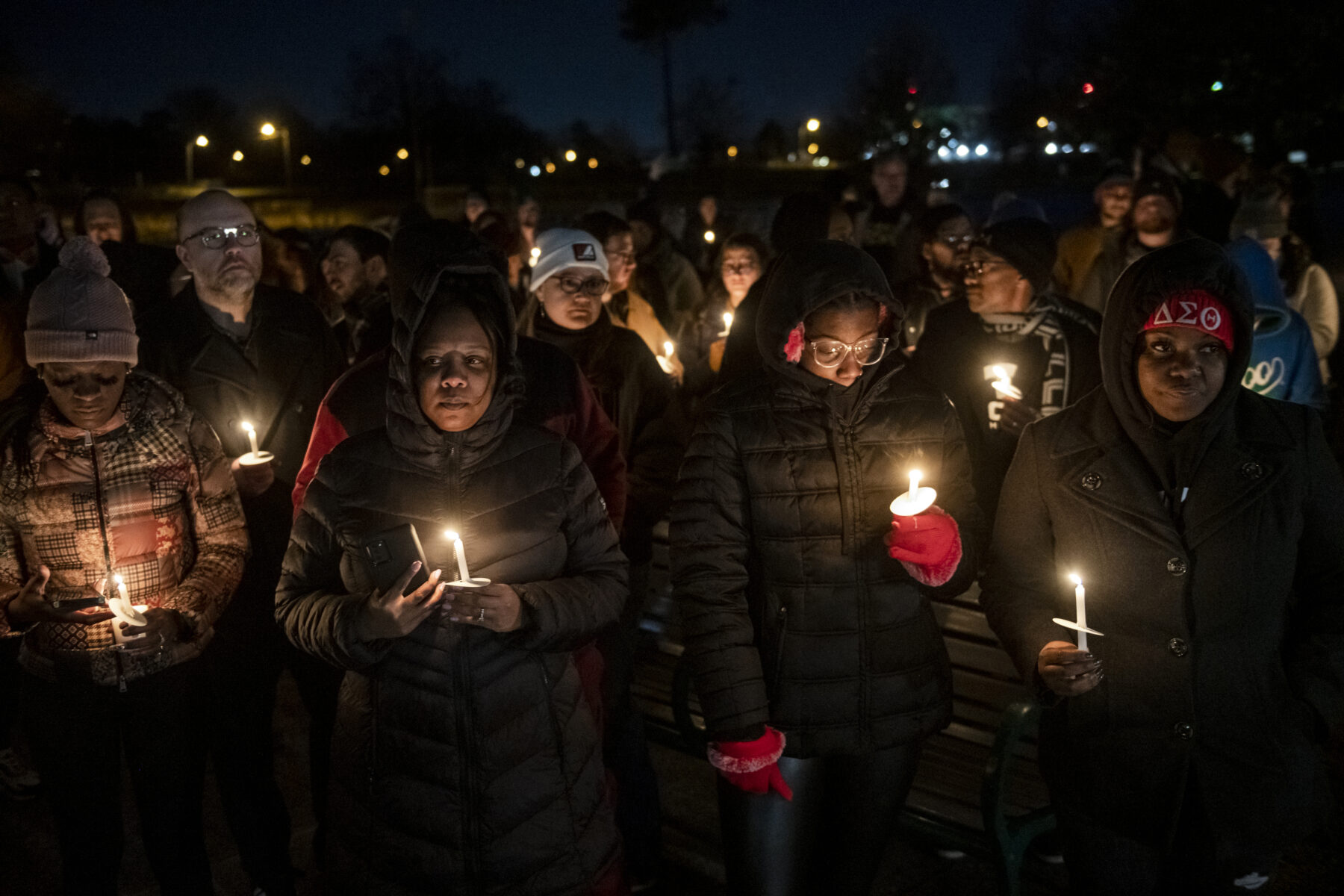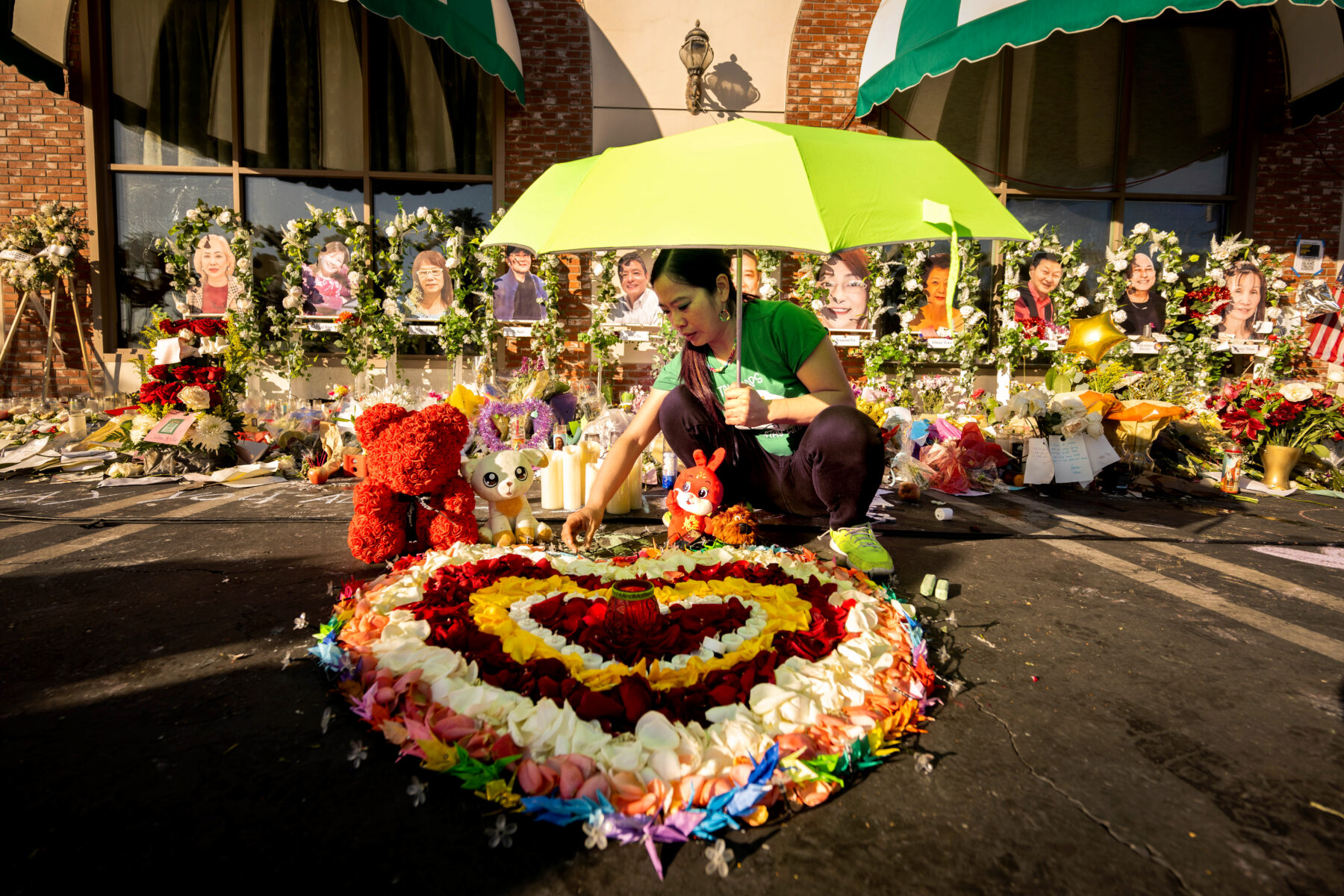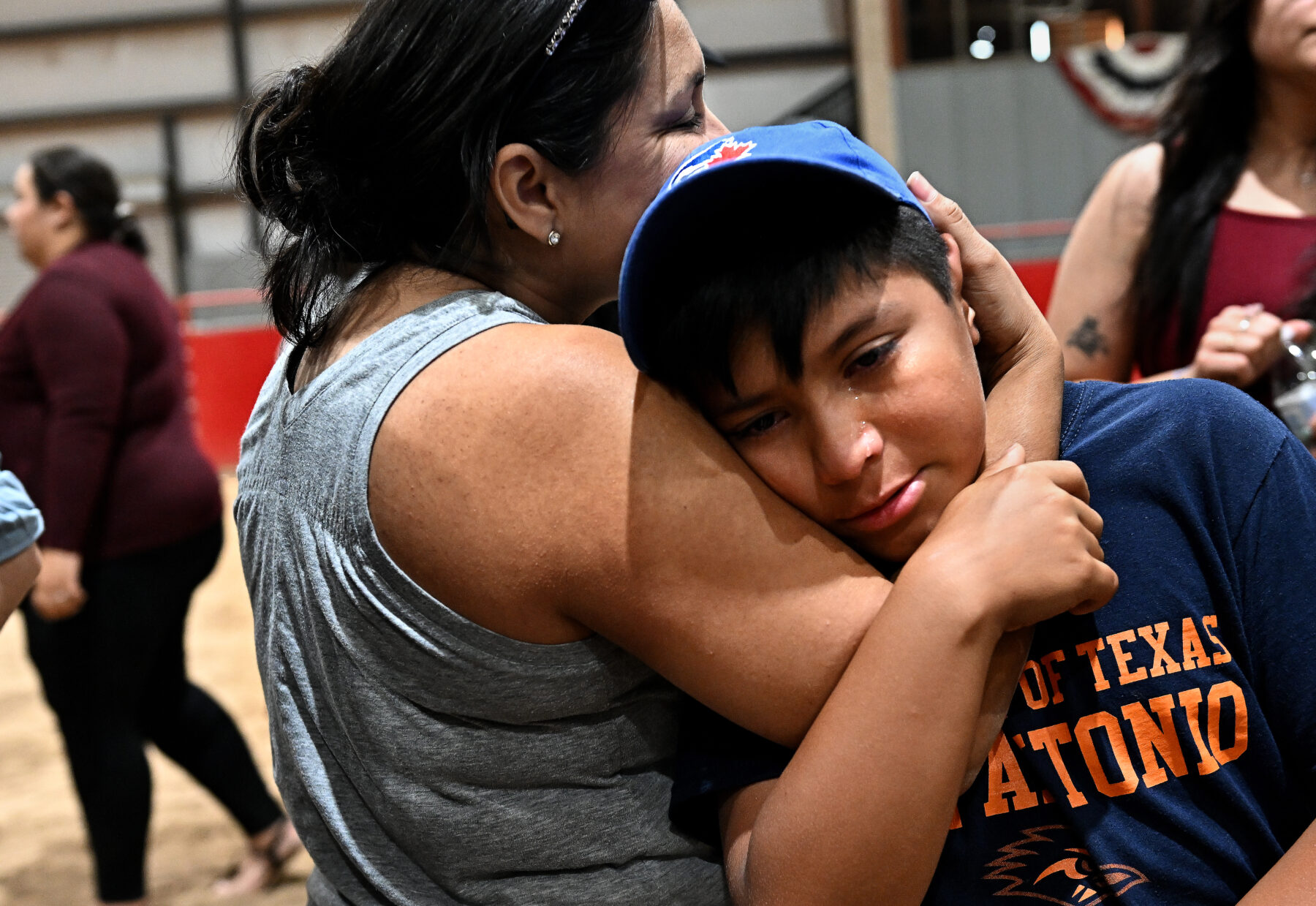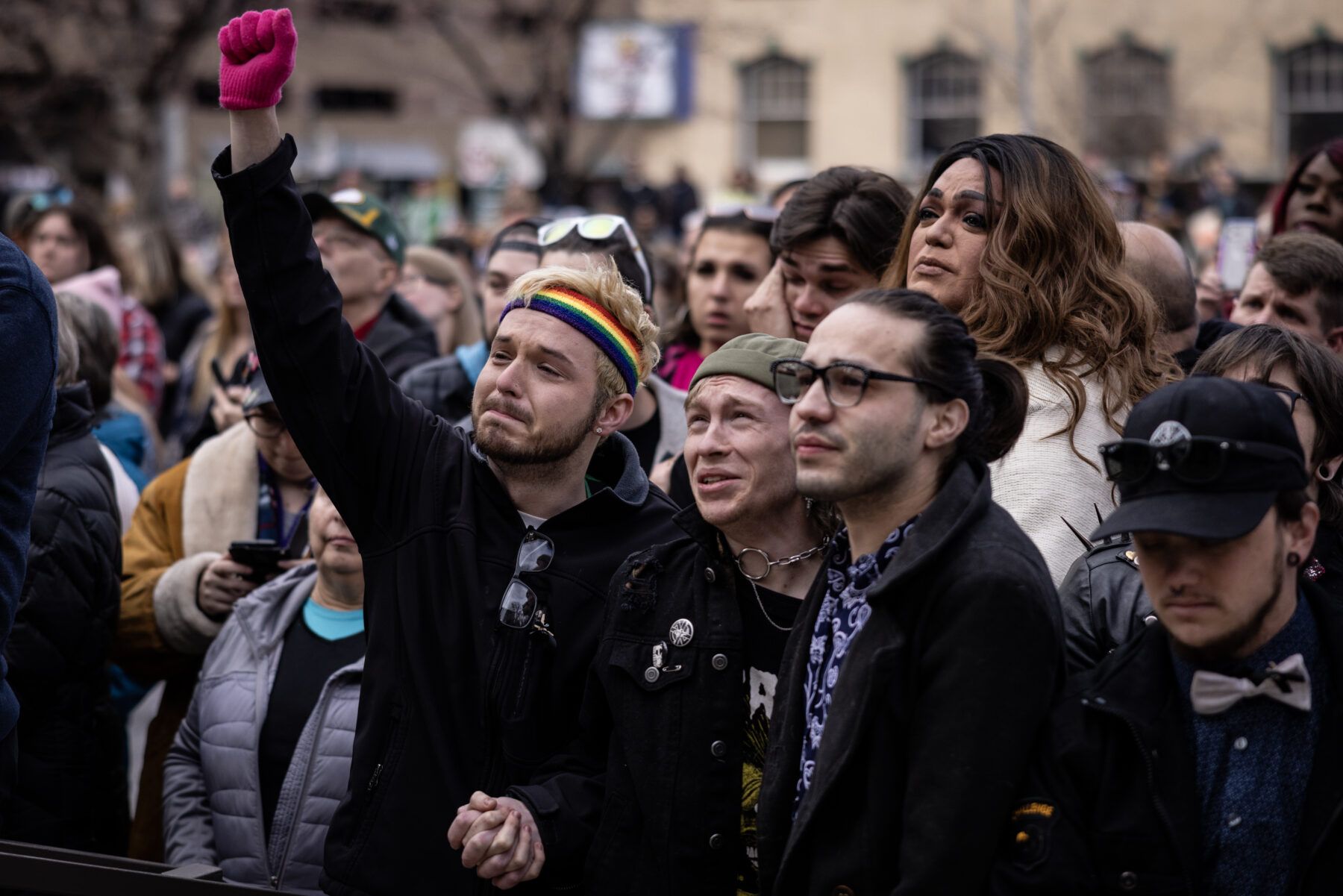
When covering the police beating death of Tyre Nichols, some outlets dropped in a fact never to touch it again: The officers, like the 29-year-old victim, were Black.
The face of police violence, just like mass shootings, is often thought to be white and male. And Nichols’s killing was in the same month as the Monterey Park and Half Moon Bay shootings in California, where the suspects attacked fellow Asian Americans in their communities. In the past year, you could add the Uvalde shooter (an 18-year-old Latino who killed 21 people at his former predominantly Latino elementary school) and perhaps the Colorado Springs suspect (who asked to go by they/them pronouns after the deadly shooting at an LGBTQ club) to the list of perpetrators who may have committed extreme violence in their own communities.
The intersection of race and violence is often layered and complicated, and who the violent actor is shouldn’t diminish the tragedies suffered by these communities — Black people still die disproportionately at the hands of police, according to data collected by the Washington Post, and anti-Asian hate crimes still rose over 300% in the pandemic, according to a report by the Center for the Study of Hate and Extremism. At the same time, journalists shouldn’t make assumptions or squeeze tragedies into narratives that don’t fit. Exploring the layers, adding context is part of our jobs.
“One of the most helpful things in understanding all [these tragedies] is cultural competence. That’s why we’re always pushing for diversity in our newsrooms because it’s not just an individual who’s been victimized in these cases — it’s an entire community,” said MSNBC correspondent Trymaine Lee. “The context is important to understanding the pathway to this moment and how we got here — that no one just dropped out of the sky.”
Equity Lab spoke with Lee, NBC News correspondent Kathy Park, NBC Latino senior writer Suzanne Gamboa and NBC Out reporter Jo Yurcaba about the role of systemic racism in these violent events, reporting on one’s own community and the importance of covering all the issues at play in a tragedy. The following conversation has been edited for clarity and length.
Equity Lab: One of the things people were quick to point out after the police killing of Tyre Nichols and the mass shooting in Monterey Park was that the suspects didn’t fit the stereotypical profile of perpetrators of such crimes. They weren’t white men. In fact, they were of the same race as the victims. Tell me why their race does and doesn’t matter.
Kathy Park: On the ground in Monterey Park, initially when we didn’t have the details, everyone was quick to jump to conclusions in regards to race. Everyone was still scarred by what happened in Atlanta and the rise in anti-Asian hate crimes across the country.
Regardless, the community was shaken and several people were killed. It was painful. The community will never be the same after something like this. This is something that unfortunately is going to be a part of their history, and it’s not what they want to be known for. Ultimately, race doesn’t matter. It’s someone who is going to go in there to do harm. And with that intention, it should just be categorized as hate.

Trymaine Lee: So often when we think about these stories of police killing unarmed Black people, we see it as an extension of white supremacist systemic violence. But it’s systemic violence because it doesn’t matter which people or cogs you swap out, it’s systemic regardless of the individual actors. It’s working in furtherance of white supremacist violence and maintaining the status quo. And so, in the case of Tyre Nichols, an alleged murder at the hands of five Black police officers, look no further than the plantation system where Black people were also employed as overseers. It’s important for us to remember what systemic racism is. While the players may be different, the result is the same.
Pointing to the race of the officers, while it does offer some nuance and wrinkle in our understanding of all these systems at play, the result is still a Black man died unjustly.
Suzanne Gamboa: It’s almost like both answers are correct. For me, as a Latina and someone who covers this, we’ve been dealing with this for a long time, if you think about immigration. Many Latinos have dealt with the question, “Why would some Latinos join the Border Patrol and be against their own people?” And then they get called vendidos, sellouts.
I did a story about Latinos being involved in the killings of Black victims and how they get to that stage. I talked to a Latino former police officer who had written about adopting the white supremacy that has long been in the system, and it’s an assimilation to be accepted, to be promoted, adopting the way things are done and not standing out from that and saying, “We’re being racist here.”
In Uvalde, the shooter was Latino, and that doesn’t matter in the sense that you’re dealing with this horrible tragedy. But it does matter when you think about all the parts going on in these systems that are in place, especially even now — like Nick Fuentes and the Proud Boys. And some people are like, “How is it that all of a sudden Latinos are joining the white supremacy?” When actually, if you go back and look at assimilation and not wanting to be subject to Jim Crow laws — all of that adds up. These are systemic, entrenched things that we do have to discuss, that some people want to keep people from discussing or learning about.
“So often when we think about these stories of police killing unarmed Black people, we see it as an extension of white supremacist systemic violence. But it’s systemic violence because it doesn’t matter which people or cogs you swap out, it’s systemic regardless of the individual actors.”
TYRMAINE LEE
MSNBC CORRESPONDENT
Jo Yurcaba: In Colorado Springs, the alleged shooter, Anderson Lee Aldrich, told defense lawyers that they use they/them pronouns and identify as nonbinary. Immediately, when this news came out, people were talking about how they believed this was a trolling attempt. Meanwhile, for an article, I spoke to extremism experts who said we have a lot of evidence that Aldrich was specifically involved in white supremacist and white nationalist online communities that are well known for trolling.
So it was a really difficult conversation: The trans community believes that you should take someone’s self-identification at face value. At the same time, we need to acknowledge that this person has a history of making homophobic and transphobic remarks and created a “free speech” website and posted racist and anti-Semitic content there. To Trymaine’s point, Aldrich’s claiming to use they/them pronouns was a way to distract from the fact that they created this racist website, that they also were a part of this larger system of white supremacist online communities.
Equity Lab: Would you say these acts of violence expose the systemic racism, misogyny, homophobia, transphobia that people internalize, regardless of the perpetrator’s identity? Is the race or identity of the perpetrator less important than the race or identity of the victims?
Park: Talking to folks at Monterey Park, they were saying that this was deeply personal because Lunar New Year is probably the most sacred celebration within the Asian community. But this situation was also interesting because it sounded like the suspect had a personal vendetta and a grudge against just everybody. He was ostracized by the dance community that he was once a part of, his family got upset with him and then he decided to target a community he was very familiar with. It sounds like he used that knowledge to basically go back to familiar territory to carry out what he did.
And then, coincidentally or not — I didn’t cover this one — you had the shooting up north in Half Moon Bay, another Asian individual. But this one sounded more like a workplace shooting. Obviously, the common theme between the two was that nearly everyone was of Asian descent. But I’ve covered so many of these things, it’s hard to lump everything together because every situation is unique in the sense that you have so many questions about what motivated these guys. And no matter how many times I cover this, the community is just shattered and torn. This is a stain. Who knows when the next one will start.
“Because for so long we have had young white males as our shooters, it’s been easy for some of us in our communities of color to lull ourselves into this idea that it’s not a problem within our own ranks, or an issue that needs our attention and that we need to go out to the polls and vote on.”
SUZANNE GAMBOA
NBC LATINO SENIOR WRITER
Lee: Outside of some of the obvious systemic violence, like police, most of the violence we always see is going to be communal. So it wouldn’t be a shock that Asian Americans would kill Asian Americans, or Black on Black, because we still live in such a segregated world. But we think back to the French West Indian writer Frantz Fanon, who talked a lot about the colonized mind and violence. The violence heaped upon the colonized from the colonizers is so far-reaching that the colonized dare not strike back at the system, right at white supremacy. The violence of starvation, the violence of barriers to access, all the different forms of violence — the only way you can relieve that violence is by striking out at each other. So it’s a much deeper sense of the internalization of racism and misogyny.
Gamboa: That’s a really good point. When I went to Uvalde, before all the details came out, you’re sort of in this mentality of “Is this another hate crime against Latinos?” and then you find out the shooter was a young Latino man. You deal with so much of the tragedy and the parents and you have to have this sensitivity of not making excuses for the gunman, but you can’t help but think about things like gun violence and how Latinos tend to be supportive of gun regulation, but our turnouts at elections are not so great.
When you have time to step back and you’re not running to do a million other stories, there are things at that core that Trymaine talks about — poverty, availability of mental health in the community — all those things weigh in. At the same time, because for so long we have had young white males as our shooters, it’s been easy for some of us in our communities of color to lull ourselves into this idea that it’s not a problem within our own ranks, or an issue that needs our attention and that we need to go out to the polls and vote on. These are all things that we as journalists can deal with in stories when given the chance.

Equity Lab: You bring up a really good point. As a journalist, we must provide context. What is our role when covering these complicated tragedies? What kind of context should we be providing?
Lee: One of the most helpful things in understanding all this is cultural competence. That’s why we’re always pushing for diversity in our newsrooms because it’s not just an individual who’s been victimized in these cases — it’s an entire community. Especially when it’s community-on-community violence, they will carry these stereotypes. So, the context is important to understand the pathway to this moment and how we got here — that no one just dropped out of the sky. But I also think it’s very important to connect with communities and empathize with them as much as possible and let that be reflected. Obviously, we’re objective, but our vantage point from these scenarios can be as close to the community as possible, which is why we need diverse voices in our newsrooms covering these tragic stories.
Park: Being on the ground in Monterey Park, I don’t speak Chinese. I’m of Korean descent. But I think when communities see someone who looks like you, they feel more inclined to speak. I do have to admit, though, when it comes to Asian communities, whether it be language barriers or more cultural, it’s tough to get them on camera. You want to tell their stories, you want to share their stories, but there are roadblocks: If they’re not going to talk, they’re not going to talk. So when I’m in these situations, I have to work a little harder to be able to share the full story and make sure I have that perspective right and that the story is being presented accurately and it represents our culture, but also be sensitive to everything as well. It’s a fine line.
Lee: As a Black journalist, sometimes we are seen as a brother, like, “Oh, you’ll understand.” But we’re also seen by some as an extension of these systems and machines the same way a Black police officer may be: “We’ve been done dirty in the past and it’s not fair and you’re an extension of that.” So, to your point, Kathy, it does take work. Sometimes there’s that natural connection, but I think as journalists, we do need to be intentional about making sure we are working those relationships in the way that benefits all of us to tell the story, but also those whose stories are being told.

Yurcaba: I definitely connect to what Trymaine is saying because during Colorado Springs — and this happens every time when I reach out to people in a more conservative area — they are very skeptical. Trans people specifically are skeptical when engaging with the media because the media has mistreated trans people for so long in deadnaming and misgendering them and asking them to validate their identity and give journalists a crash course in what it means to be trans.
And so when I was approaching people there, I found myself disclosing I am trans and nonbinary, like these are my pronouns, and that made people more comfortable. But still, I gave them examples of all of my past work where I’ve covered the trans community, and that helped people feel more comfortable.
But it’s an ongoing relationship that you have to keep with communities across the country. And for me, what’s been really helpful is not only being a part of the trans and nonbinary and queer communities, but also being from the South. I live in Raleigh, N.C., and that also immediately changes people’s perspective when I’m talking to queer people in Southern areas because often they’re written off.
Gamboa: I’ve done this for a number of years and I’ve covered so many disasters and often found, as Trymaine said, you go into the community and they open up to you because you’re the one brown face there or the one Latino. Once, I got the only interview in Texas with the mother of a young boy who was shot and killed by the Border Patrol. Our newspaper was late to the story, and I know I got it because I looked like them.
But in Uvalde, it was interesting because you had families that were connected to law enforcement. And I found it amazing how long it took for the parents to finally open up. People were not just turning stuff over or talking to me just because I was brown. There was a definite protectiveness, and I think there was also this word out on the street among law enforcement, which is its own community, of “Don’t talk to the media.” You’re dealing with a whole different culture and just being part of the Mexican American community isn’t enough.
I do feel there’s at least more open conversation about the job we’re doing covering these issues and whether we’re doing it right. And people like ourselves can speak up. When the El Paso shooting happened, I was right away saying, “Hey, I know that Walmart and it’s right on the border. This is where Mexicans come to shop. Is there something going on here?” Then at NBC Latino, we led with how Latinos had been the target of rhetoric by then-President Donald Trump and now they became the target of a gunman. It was certainly different from what I’d seen in other times.
Yurcaba: What I saw missing from a lot of the Colorado Springs coverage, particularly from news outlets that don’t have someone who specializes in covering the LGBTQ community, was that necessary context that this wasn’t an isolated incident. We’ve had rhetoric for two years now coming from state legislatures across the country calling LGBTQ people pedophiles and groomers and specifically calling trans women men who are going to prey on women in bathrooms. My colleague wrote a story months before the shooting where an expert said he was waiting for the next Pulse to happen. The first two people I interviewed in Colorado Springs told me they were feeling two things: devastation and fury because they saw it coming. That is where I would still like to see improvement: people understanding that this isn’t something that you can just have someone cover occasionally because this is happening constantly. People are dealing with this every day.


